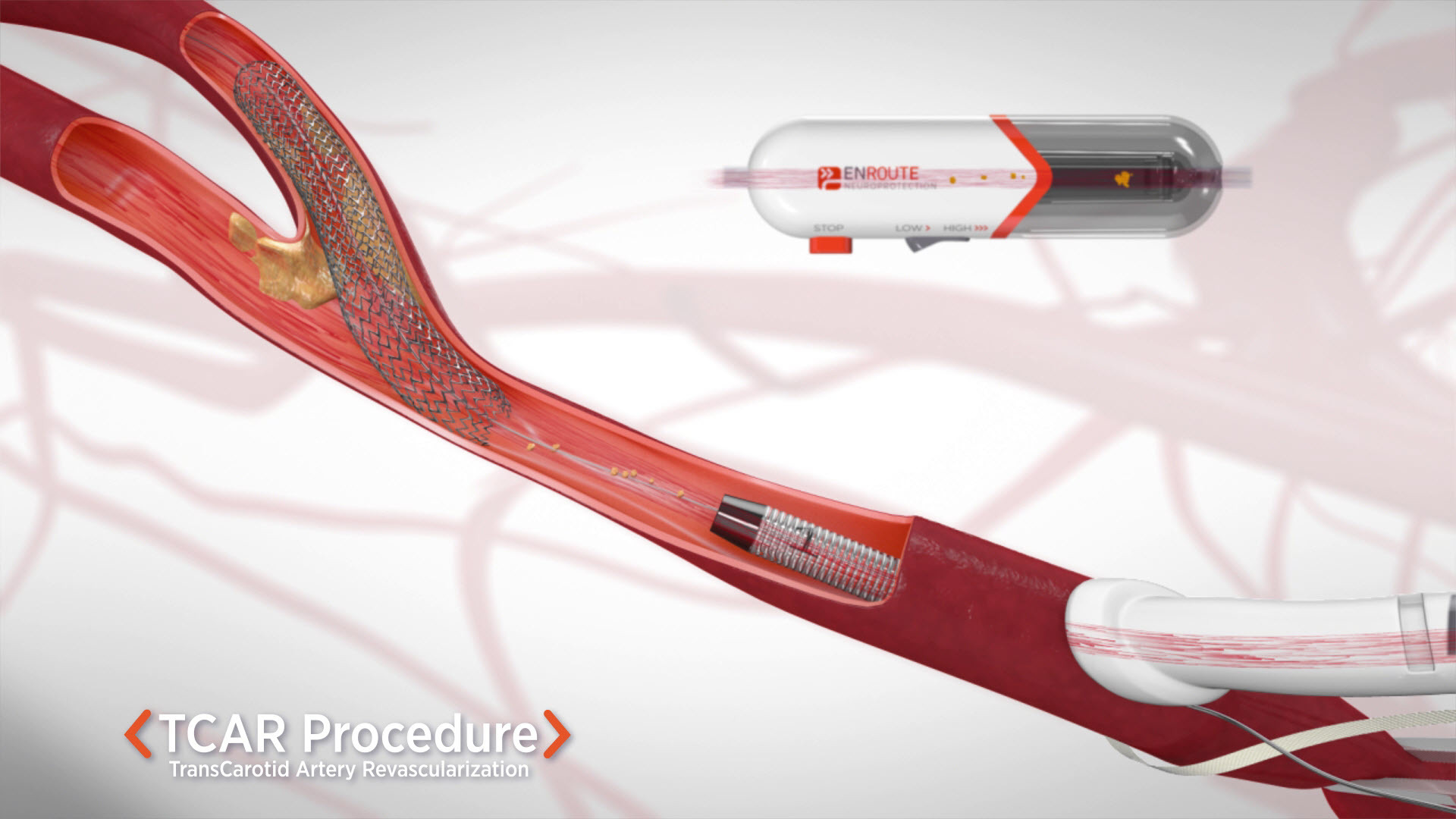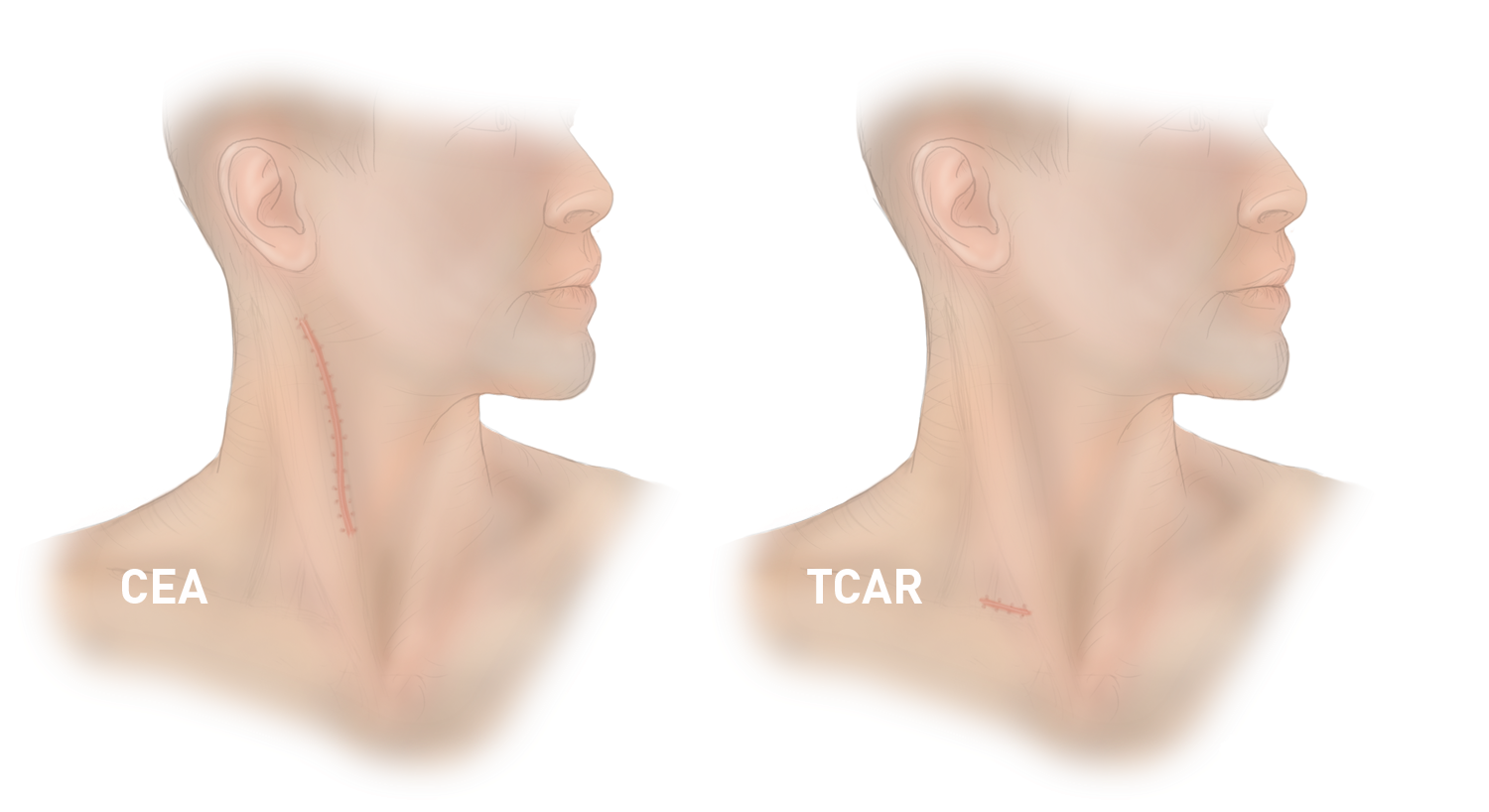
Stroke is the third leading cause of death in the United States and it is estimated that carotid artery disease (plaque buildup) is the cause of up to a third of the stroke cases. Traditionally, these patients were typically treated with open surgery – carotid endarterectomy. Now there is a less-invasive treatment option, TransCarotid Artery Revascularization (TCAR), that is clinically proven to decrease the risks of stroke and safer than stenting approached through the groin.
Northside’s vascular surgery program was one of the first in the state to offer this less invasive approach for stroke prevention.

Dr. Siddharth Patel, of Northside Vascular Surgery, is a leading surgeon for the TCAR procedure and is involved with continued innovation to further improve upon already excellent outcomes. He serves on the nationally recognized faculty that is tasked with the education and training of graduates and established vascular surgeons on how to perform TCAR and utilize best practices. Because of our early adoption, our surgeons have a skill-set unmatched in performing this procedure and our facility has been designated a Center of Excellence.
The unique difference with the TCAR procedure is that blood flow is temporarily redirected away from the brain and cycled through a filter to catch any small bits of plaque that may break away. A stent is implanted directly into the carotid artery to stabilize the plaque and prevent future strokes. Once the stent is successfully placed, blood flow resumes its normal direction. While any repair of the carotid artery carries some risks of causing a stroke, the incident rate is significantly lower with TCAR.
| Statement Every year, 15 million people worldwide suffer a stroke, also known as a brain attack | Reference Statement Annually, 15 million people worldwide suffer a stroke. Of these, 5 million die and another 5 million are left permanently disabled, placing a burden on family and community. | Source World Health Organization EMRO | |
| Statement Every year, about as many Americans have a stroke as a heart attack | Reference Statement Each year, about as many Americans have a stroke as a heart attack | Source American Stroke Association | |
| Statement Often called the silent killer, the first symptom of a patient at risk for stroke is a stroke itself | Reference Statement Nearly 800,000 (approximately 795,000) people in the United States have a stroke every year, with about three in four being first time strokes. Stroke is the No. 5 cause of death in the United States, killing 130,000 people a year. | Source American Stroke Association Heart and Stroke Statistics | |
| Statement Every year, stroke kills 6 million and another 5 million are permanently disabled | Reference Statement An estimated 17.7 million people died from CVDs in 2015, representing 31% of all global deaths. Of these deaths, an estimated 7.4 million were due to coronary heart disease and 6.7 million were due to stroke. | Source World Health Organization CVD Fact Sheet | |
| Statement 87% of strokes are caused by blocked arteries | Reference Statement Ischemic stroke accounts for about 87 percent of all cases. | Source American Stroke Association Ischemic Strokes (Clots) | |
| Statement Up to 1/3 of strokes are caused by carotid artery disease | Reference Statement Carotid stenosis is responsible for up to one-third of all strokes. | Source Society for Vascular Surgery | |
| Statement People with diabetes are 2-4 times more likely to have a stroke | Reference Statement High blood sugar can make you 2-4 times more likely to have a stroke. People with diabetes are up to four times more likely to have a stroke than people who don’t. | Source WebMD - What Can Prevent A Stroke? | |
| Statement About 1 in 5 people who suffer a stroke have A-fib | Reference Statement And an irregular atrial heart rhythm — a condition called atrial fibrillation — is present in about one out of five strokes. | Source American Heart Association - High Blood Pressure, AFIB and Your Risk of Stroke | |
| Statement In people having a stroke for the first time, 3/4 have high blood pressure | Reference Statement About three out of four people who have a stroke for the first time have high blood pressure. | Source American Heart Association - High Blood Pressure, AFIB and Your Risk of Stroke |